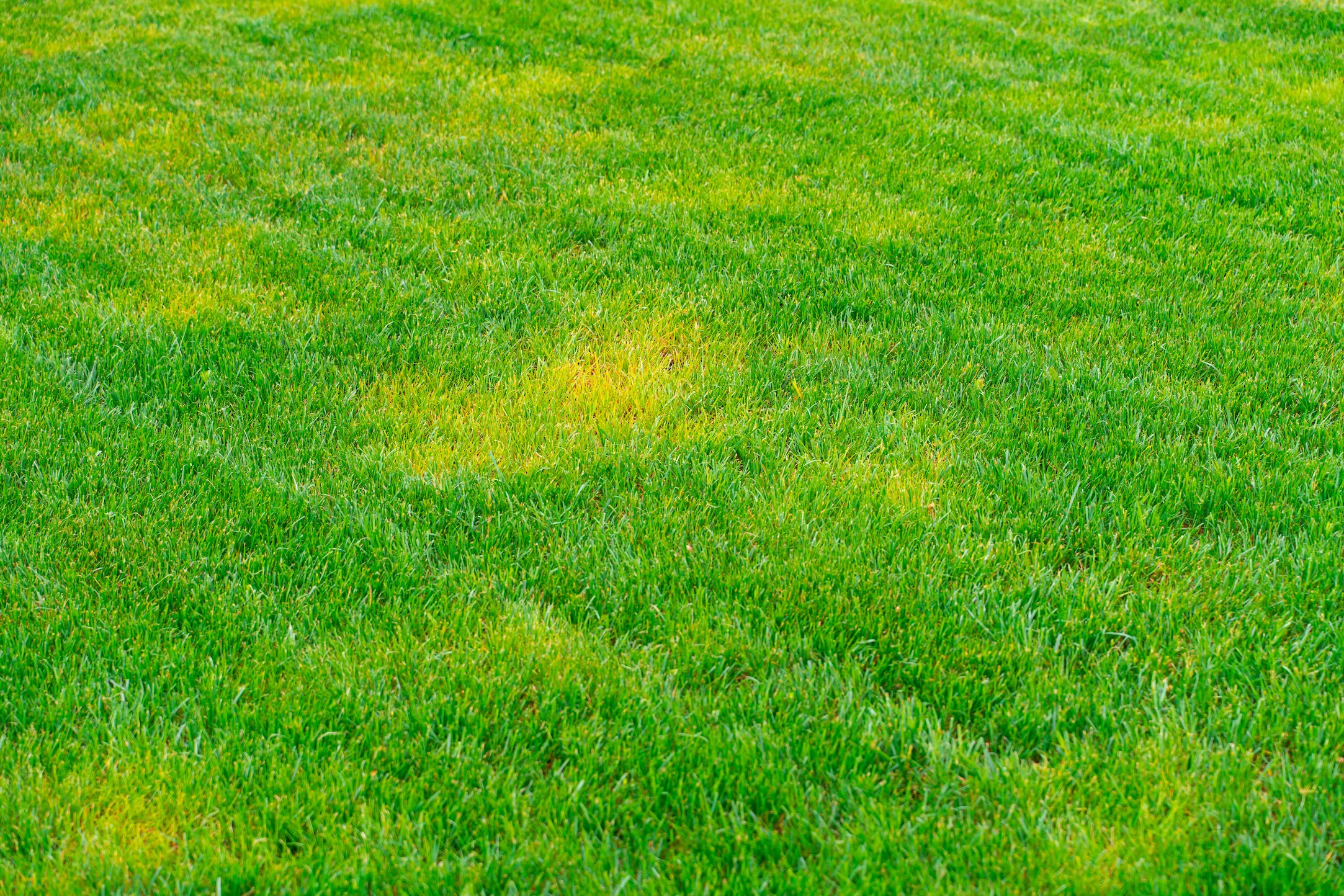The 4 Best Ways to Repair Lawn Spots
No matter how green your grass may be, if you have one yellow spot it's all your eyes are going to gravitate towards. Repairing these dead spots doesn't have to be difficult with these 4 methods that anyone can use.

There are few things more satisfying in life than opening the shades on a sunny morning and looking out on a perfectly manicured lawn. For many, achieving the perfect lawn begins as a chore that turns into a hobby that grows into an obsession, and nothing beats the feeling of seeing the morning dew glisten over the sea of green you've worked so hard to cultivate.
But even the most ardent lawn enthusiast will tell you that just when you think every weed is gone and every edge is trimmed, something goes wrong and there they are: big, ugly dead spots defiling your beautiful lawn.
If you ask your neighbor or father-in-law what to do, you’ll probably hear a host of theories and opinions, from tried-and-true methods to urban legends. Lawn spots form for a number of different reasons, and there are several ways to get rid of them. Today, we’ll look at why spots occur and four of the most effective techniques for repair.
The beer method
Depending on your perspective, this might be the best or worst way of getting rid of a lawn spot. Worst because it means you’ll have one less beer to enjoy, and best because, well, isn’t it great what beer can do?
All you need is a can or bottle of beer. It doesn’t matter if it’s warm or cold; just make sure it’s regular beer, not light beer or malt liquor. Take the beer and pour it onto the dead spot and wait for a week. You’ll notice a big difference in how your lawn looks! And if there’s still some brown, add another beer.
Why does this work? Beer is naturally loaded with fermented sugar and other nutrients, which help revive the soil after a dog or other animal has killed it with their urine.
Give your grass an iron supplement
You may have noticed that areas around the sidewalk, driveway and anywhere else there’s concrete tend to get rather spotty. The reason for this isn’t the neighbor’s dog, but because the high alkaline levels in concrete absorb the iron in the soil, effectively stealing a vital nutrient needed for a healthy lawn. Your grass may not die, but it will turn a pale, unsightly color.
Just like people can take a once-a-day iron supplement, so too can you buy iron to replenish your soil. A product like this Iron Pro Supplement can be easily applied with a spreader, acts quickly and will get your grass looking green and healthy in no time.
Utilize nitrogen fertilizer
Nitrogen is a tricky chemical. Too much can kill your grass (this is what happens when animals pee on your lawn, saturating the soil with nitrogen from their urine), and too little can also cause your lawn to wilt. For this you’ll simply need an all-purpose nitrogen fertilizer. Many people understandably worry about putting chemicals on their lawn, but there are all-natural solutions available. Products like Milorganite Organic Nitrogen Fertilizer can be applied at any time and is suitable for any climate.
Sometimes the grass is just dead
Soil chemistry aside, sometimes you have a patch on your lawn that isn’t going to come back to life with beer or other forms of nutrients. The most common culprit for dead grass patches is insects, mold or too many people walking on it, physically damaging the soil. In these cases, you’ll have to do a bit of an overhaul and reseed the area to return it to the original pristine green.
Here’s the eight-step method of how to do just that:
- Clear the area, removing any dead or wilted patches of grass or turf so that you have an exposed area of soil.
- Loosen it all up. Take a hoe or a rake and scratch, dig, tear and turn the top 2 or 3 inches of soil.
- If your soil is really poor, stir in some compost or organic matter, as this will be crucial when adding the seed.
- Scatter the grass seed over the loose soil. Keep most of it near the surface, but gently rake some of the seed into the top inch of soil.
- Lightly press the area to ensure there is good seed-to-soil contact.
- Scatter a small amount of lawn fertilizer over the area.
- Add a layer of straw to the top of the newly seeded area. This will help slow how fast the water is evaporated, keep the seeds in place and help get everything in the germination process started.
- Water generously so that the top 2 inches of soil are saturated. Water twice a day for two weeks and watch your seedlings grow.
While it may be frustrating to see the blotches of beige and yellow on your lawn, reviving those dead patches can be easy and rewarding. Even when you have to tear up an entire area and reseed, most find this to be a rewarding process.












